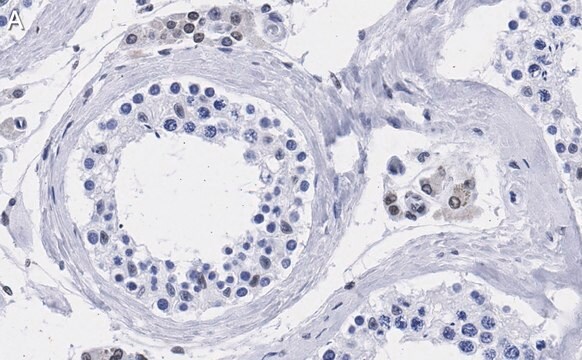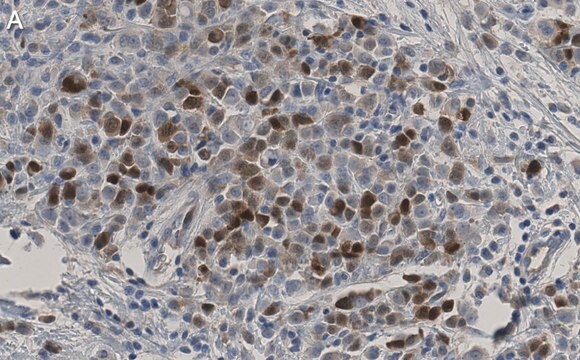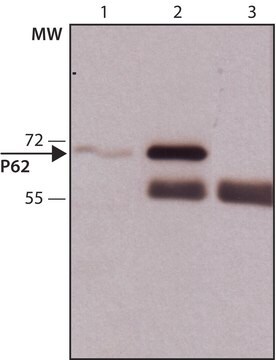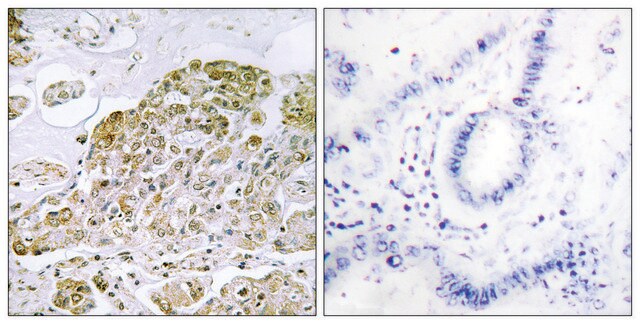SAB4200803
Anti-TFE3 antibody produced in rabbit
affinity isolated antibody, buffered aqueous solution
Sinónimos:
Anti-Class E basic helix-loop-helix protein 33, Anti-Transcription factor E3, Anti-bHLHe33
About This Item
Productos recomendados
biological source
rabbit
antibody form
affinity isolated antibody
antibody product type
primary antibodies
clone
polyclonal
form
buffered aqueous solution
mol wt
~60 kDa
species reactivity
mouse, human
packaging
antibody small pack of 25 μL
concentration
~1.0 mg/mL
technique(s)
immunoblotting: 4-8 μg/mL using human HeLa cells extract
immunofluorescence: 2.5-5 μg/mL using mouse embryo fibroblast NIH-3T3 cells
UniProt accession no.
shipped in
dry ice
storage temp.
−20°C
target post-translational modification
unmodified
Gene Information
human ... TFE3(7030)
General description
Anti-TFE3 antibody specifically recognizes TFE3 from human and mouse origin.
Immunogen
Application
Physical form
Other Notes
¿No encuentra el producto adecuado?
Pruebe nuestro Herramienta de selección de productos.
Storage Class
10 - Combustible liquids
wgk_germany
WGK 3
flash_point_f
Not applicable
flash_point_c
Not applicable
Elija entre una de las versiones más recientes:
Certificados de análisis (COA)
¿No ve la versión correcta?
Si necesita una versión concreta, puede buscar un certificado específico por el número de lote.
¿Ya tiene este producto?
Encuentre la documentación para los productos que ha comprado recientemente en la Biblioteca de documentos.
Nuestro equipo de científicos tiene experiencia en todas las áreas de investigación: Ciencias de la vida, Ciencia de los materiales, Síntesis química, Cromatografía, Analítica y muchas otras.
Póngase en contacto con el Servicio técnico








